March 8 - 14, 2015: Issue 205
Marian Purvis
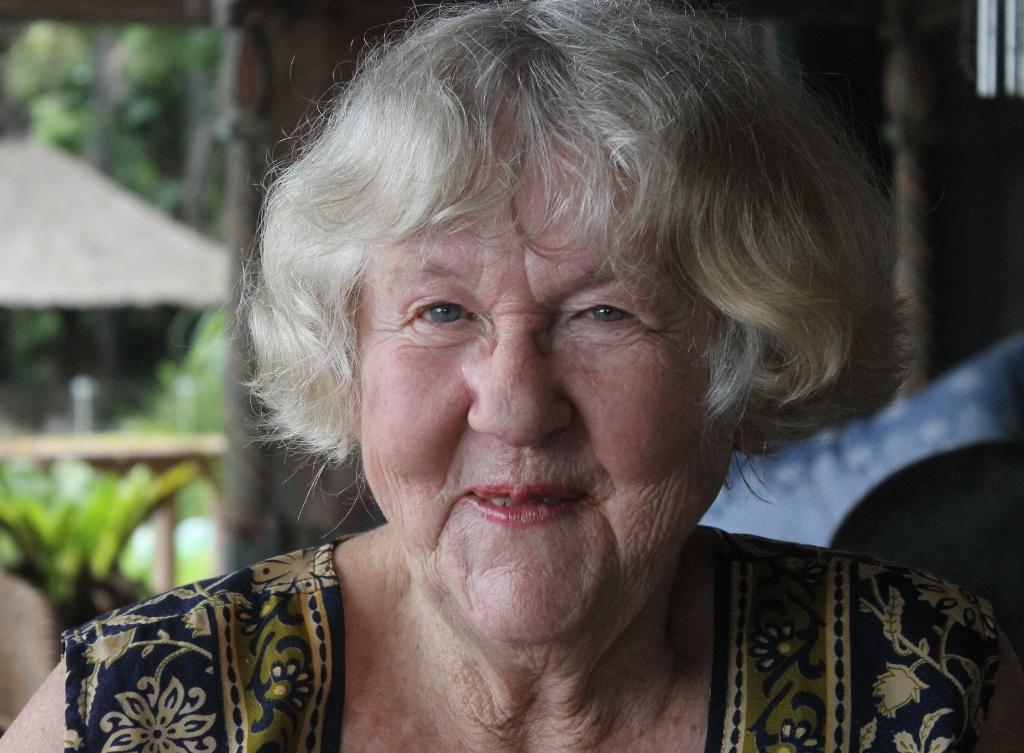
Marian Purvis
One of the artists on this year’s Pittwater Artist Trail, Marian has been creating for at least 74 years. Her works have been hung in hundreds of Selected Exhibitions, several times at Manly, as well as solo exhibitions at the Holdsworth Galleries and in many annual art exhibitions and competitions, including the Wynne and Sulman. One resides permanently above the fireplace in Ibiza café, Avalon, next time you visit.
Marian won the prestigious Medal of Distinction at the Royal Art Society for 2008 “that picture was a little bit more spontaneous”, and since the 1950’s has donated works to raise funds for many a charitable cause, the latest ‘Secret Garden’ for the February 27th 2015 ‘Sticks and Stones fundraiser for research into Oseteogenesis Imperfecta (OI) by The Centre for Children's Bone Health at The Children's Hospital at Westmead.
A regular visitor to Mount Victoria, where a lot of her bush scenes come from, there are among her prolific works many of Pittwater as well. One of Whale Beach was so liked by a visitor that a version was commissioned.
Marian proudly shows off her husband’s, The Honourable Dr RNJ Purvis AM QC, published works, and minutes later Rod remarks ‘that’s the photograph to take, when she’s looking at you seriously and pointing’ – and this clearly would be another lifelong love.
A vivacious intensely intelligent girl dwells within eight decades of a lady in full possession of ever evolving creative skills which manifest through painted works of many genres, through print works, sculpture, ceramics and wonderful photography.
“There were four things that led to my being an artist – I’m an obsessive drawer; a need to communicate what I have experienced(Central Australia’s Kimberly regions and places overseas visited), I have an idea on technique which must be experimental, and just the pure joy in creating.”
This week we gain glimpses into a lifelong Australian artist – and gain an insight into Australian art itself thereby.
When and where were you born?
I was born just around the corner from Taronga Zoo in Mosman in 1932. I grew up in Killara and attended Pymble Ladies College (PLC) where I wasn’t allowed to do Art. I had to do Latin, which I loved, but subjects other than what I was really interested in. My drawings of fighting stallions from then, a school friend would say, ‘I’ll do your homework if you do a drawing of fighting stallions for me’. So I had a cottage industry going on from the age of about 8.
Growing up in Killara – what was that like?
I spent all my time in the bush; the moment I came home from school each day, I went into the bush.
Was that an inspirational place for you?
Yes, I could not keep out of the bush. I’ve always had a passion for Nature and felt a strong connection there, could see how small details were part of the whole. We also had a little weekender at Cronulla which my grandfather had bought so I grew up with the sea as well. Every school holidays we’d go there and I’d play on the beach and draw. I would always draw the trees and the sea and still have one of these early drawings.
So your early subjects were horses and?
Ballet Dancers, because I was doing ballet but I was hopeless. I was doing contemporary ballet and had a very close friend who was a natural dancer and made me go with her. Our teacher, Madame Bodenwieser who was alike and Isadora Duncan personality, said to me ‘you can dance in your spirit’ and would make me do something akin to Isadora Duncan styles of dance. The others would be doing more traditional leaps and stances and I’d be hopping like a little kangaroo. The point of that though was I’d develop, through ballet, a passion for form and movement and went through lots of ballet drawings.
My father’s sister, Mary Alice Evatt took me to see Dobell’s work when I was just over six years old, in fact she took me to the Art Gallery every time there was a major exhibition. She could have been a major artist in her own right but dedicated much of her time to supporting her politician husband’s work. These visits I remember and could point to as a spark.
This one was a Wagnerian inspiration I did at 17 years of age. I was mad on Wagner and loved Tristan and Isolde from the age of 14. I had a compulsion to do this and had never had one lesson.
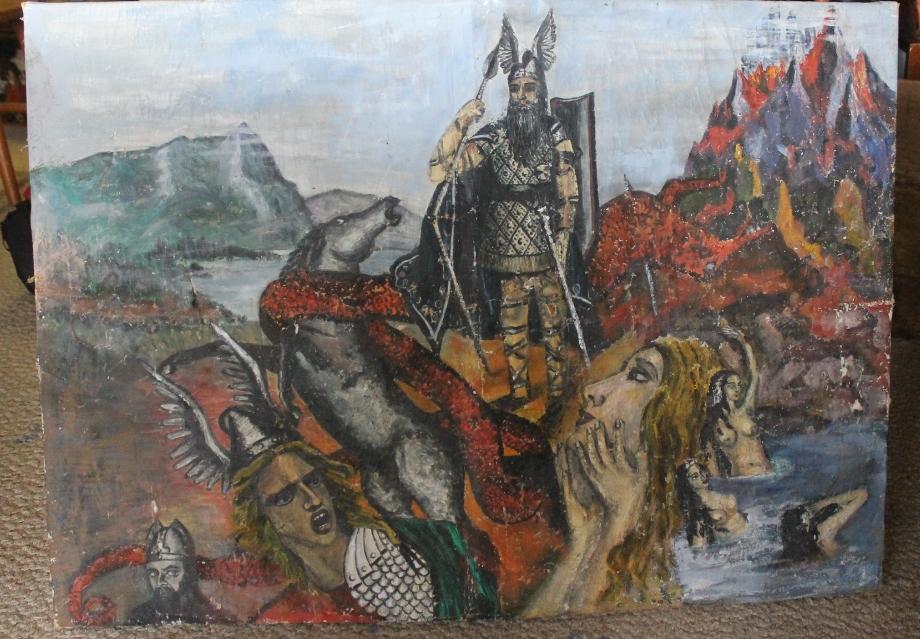
As it so happened one of my father’s friends saw this work and said ‘look, she’s got to go to Professor Giuseppe Bissietta’ who was a teacher in the Dattilo-Rubbo School, which he had taken over in 1949.
Every Saturday I attended the class given by this wonderful man and he taught me to draw in the tradition of casts and sculptures before you were allowed in the Life Class. I was also one of the first students of Joy Ewart, who was the Art Teacher at PLC and then had a studio where she also taught.
What was it like being a student of Professor Bissietta’s?
The school was in Pitt Street and I would travel there by train each Saturday. He was a very flamboyant passionate Italian and easily one of my biggest influences. He was also passionate about horses. Bissietta made you look at something until you felt the beauty and the spirit of it – if you couldn’t look properly in English he’d make you do so in Italian, particularly the form in any new model when I was allowed into the Nude School rooms. One day when we were both very young, Rod and I, who met when we were only 18, were painted by Signor Bissietta for the Art Students Ball and walked down to the Ball fully painted. This was the 1952 Ball and a very famous night as one of the students had painted himself completely with silver paint and had to go to hospital. We have a photograph of Rod and I from that evening.
He was one of those who could see beauty in the smallest of things, and would try to teach us to do so too, and do this in a very cheeky ways sometimes. I remember him holding an apple in his hand and speaking about the colour and the texture and then, he’d bite it – this was during the Life Classes, and all of it was to help us engage with the whole of anything, with how it made us feel, how to communicate essence through form.
They were wonderful classes. Many well known artists went through his school. I have one of his paintings that he gave me for a wedding present.
My father, Howard Melbourne Sheffer, who had Rexona soap, an invention of my grandmother’s, she made up the name, had to go to London for his business as he had the agency for Gala of London makeup. In 1950, soon after the war, when I was enrolling at Sydney University, he came home and said ‘I’m going on the maiden voyage of the Himalaya to London - if you want to come you can’. This was a six month trip and post-war, when there weren’t crowds of tourists, I had the opportunity to go through all these galleries. London itself was still mostly ruins then – I remember seeing St Paul’s Cathedral and just rubble all around it – it was terrible, eerie.
To have met a man like Bissietta, who was totally Baroque, and had so much appreciation of beauty, made me realise how fortunate I was to have learned from him when I went to Italy in 1950 with my parents. His teachings gave me a good grounding and made my initial experience of European culture so much deeper, increasing my appreciation of what I saw.
What do you remember of your experience of WWII here?
I remember that we had a bomb shelter under the main Hall at PLC and had to know how to get there quickly. The other starkest memory would be when the submarines came into Sydney Harbour – that was a frightening night – all that noise.
Rod (husband): The sound of the Air Raid Sirens- that was a terrible noise, that frightened people.
How did you meet Rod?
I came home and two days later my best friend said to me that the Lindfield Youth Liberal Party were having a Christmas party and did I want to go. She said it was fancy dress, and I had some terrible old ballet dress which I put on and I went. He (Rod) was made to go by a friend. The first thing he did was talk about me just coming back and asked me where I had been – and he listened to me you see. He had a lovely speaking voice, asked me to tell him about Paris, about it all – and I have never looked at another man since. I was instantly in love.
We’ve known each now for 65 years and have been married 61 years.
What did you do on your return?
I wanted to go to East Sydney Tech. to study art but I decided to become an Occupational Therapist instead. My mother said this would be good for me, would suit me – I could use my art and could pursue my love of medicine as well. I had wanted to do that if I couldn’t go to East Sydney Tech. The long and short of it is I did OT and the medical training component of that is excellent and I really liked particularly the psychiatric work that went with it. Some of the patients I came into contact with, as I worked in the field, led me to start Art Therapy at Ryde Hospital and this led to some successes with some patients. I loved Art Therapy.
Your work – how did it progress from horses and ballet and the Wagner inspired work to all the mediums you have around us here?
I had four children, in fairly quick succession, which meant I didn’t return to full time work in the Occupational Therapist field. I had private patients. I would teach them puppetry, particularly the children who were having terrible problems, they would work their problems out with puppets, and I had a great success with this private practice as an OT.
During this period, the 1950’s, there was a Save the Children Fund Exhibition and was asked by a lady I knew to put some paintings in. Those I submitted were Sydney Street scenes. I sold them all. I thought this was good and it went on from there. I’d take Andrew, who was in a stroller, and paint Sydney street scenes.
Andrew is now an artist and works out of his own Gallery in Chippendale, his sister Anita is an Art Teacher and I think Joshua, my grandson, may have some talent too.
I was painting terrace houses that were on the harbour, and one of these featured buildings that were due to be demolished prior to that first big building on the harbour. If I knew something was going to be demolished I’d go and make a record of it in art.
I loved Balmain, I painted the Mullins and Beatty Hotel, all the old hotels, all the old street scenes – I loved painting these, and these were the ones that sold. I would paint the sea occasionally. I remember incorporating a crane into one of the buildings paintings, but it was mainly the street scenes during that period.
Those are all architectural works though – why were you attracted so much to these?
I just loved old buildings. I liked the history of them, and they had so much beauty. I also had a strong motivation, which unfortunately I didn’t follow through on, to do serious drawings of all the old picture theatres in the city before they were demolished. It was too hard with young children, running a home, doing pick-ups from school, all you do when a mother, to do this.
This is an example of recording a place – this was my mother’s home, where she was living.
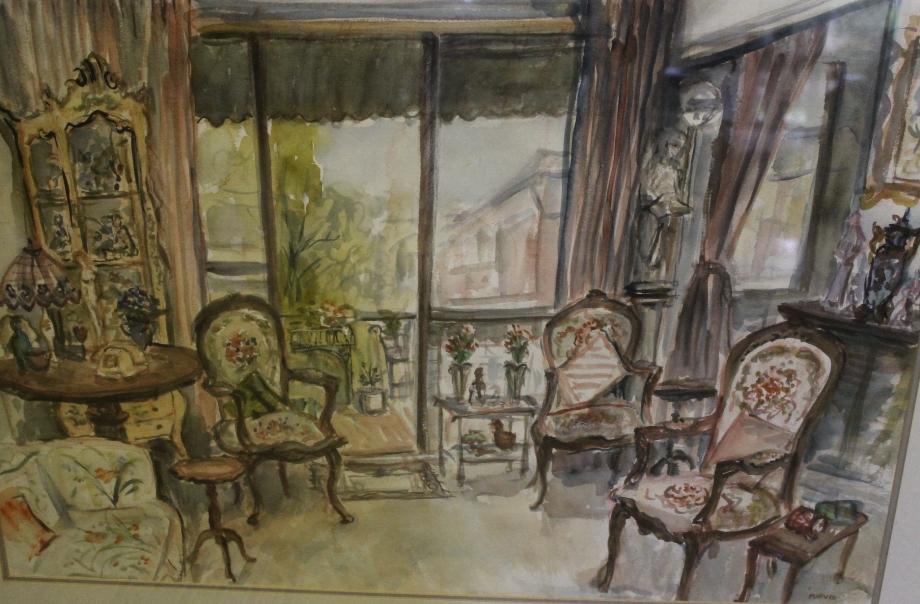
I then started on the religious paintings.
Where did that stem from?
The works for the Blake Prize stem from my feeling and strong conviction that everybody is equal on the earth, whatever colour, race, creed. I feel, perhaps more particularly now, that we all need to try and see each religion from its point of view, from another’s point of view – not being able to see another’s point of view, whether Buddhist, Christian, whichever of the many religions there are, has and is creating problems for everyone.
I went into the Blake for 15 years running, which was quite a serious business at that time. I was very interested in religion, and still am. It was my way of expressing my religious feelings. I still feel that same way now. Whenever I’m in a cathedral I am absorbing; that cupboard behind you is filled with material from overseas trips; every cathedral that I’ve sat in ever has been drawn.
There was a period I went through which produced a work I call ‘The Family of Man’. I did an etching and from this created this work – this was entered in the Blake and very well approved of, strongly commended.
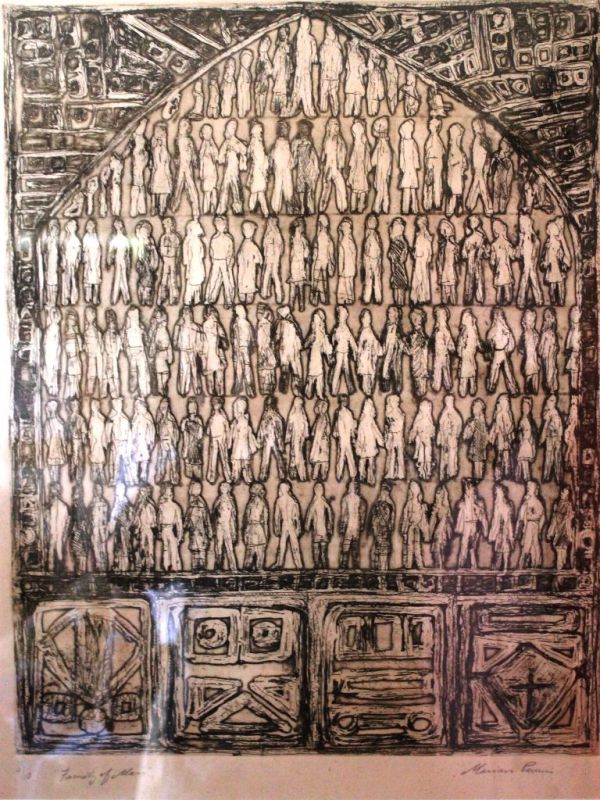
‘The Family of Man'
I continued with these and entering the Blake until they moved it from the Commonwealth Bank in Martin Place and you had to deliver them to a place that made it difficult for me to get it there, so I left it.
I was then one of the first members of the Kuring-Gai Art Society (formed 1965) and started winning prizes there. I also would enter works in the Easter Show and won prizes there as well. As you may know, you only have to win a few prizes and that boosts you on in art as well as giving you confidence.
I was then hung in the Sulman with a huge landscape, I’ve always done landscapes.
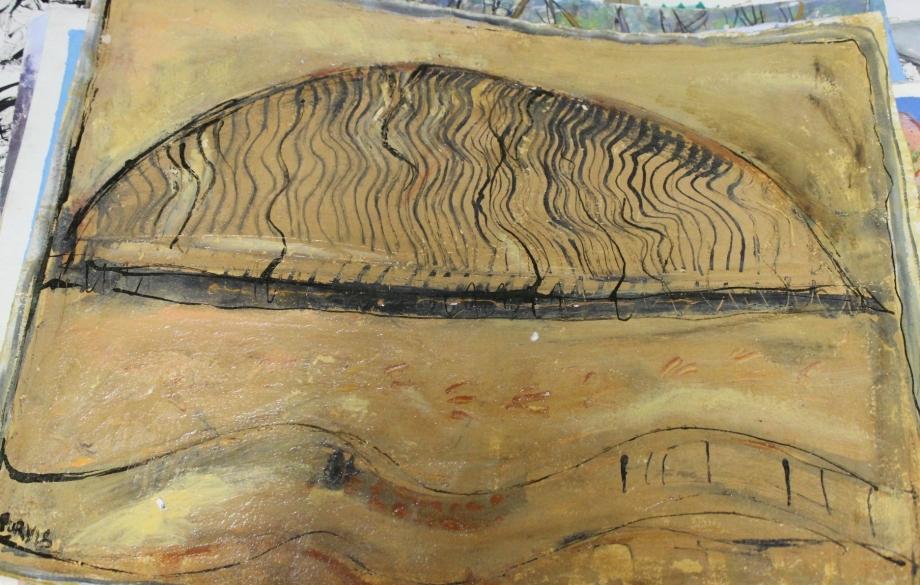
I did a clay pan series, this is painted with mud and was hung in the Wynne.
The most important thing for me has always been, and is still now, is that I respond with whatever is in my hand, and this has meant drawings, paintings, even photography.
There is one prize from this early period I’d like to share with you, it was when the children were still fairly little. Rod had just gone out as a Barrister, was working hard and late, and I couldn’t go to the Opening.
They rang and said Lloyd Rees is here and would like to meet you - I’d won the Lane Cove Prize – the Lloyd Rees Prize for Best in Show. Rod came home just then and I quickly took off to meet him. He was so sweet, and said ‘I walked around and a couple of paintings spoke to me. And then I walked around again and only one spoke to me – yours’.
To have Lloyd Rees say that was quite something for me – he was a beautiful man. I was among many who loved him I think.
We visited remote areas in Australia with family in the 1970’s. I had an exhibition of works done on these travels and sold all the works.
The miracle of that age, and for 1985, was that we were the first to go into the Bungle Bungles. We went with Clifton Pugh. This trip was being organised by somebody from Tasmania. I put my name on the list, we went, and the vehicle that was taking us had an accident and was written off so they had to get somebody else to take us. Bob Wainwright and his son Paul were given the opportunity to take a group of we ten artists into the Kimberlys. Bob became a great explorer, and a good friend, he was a salt of the earth man.
Clifton Pugh came and said ‘how brave are you girls and men?’ – ‘tomorrow we’re going to have a major adventure; we’re going to drive down a riverbed, there’s no road, and we’re driving into the Bungles. He was right, going across that country was quite an adventure. We should have written a book about it.
We then camped in among the beehives, as they’re known to some. I woke up in the morning and that was straight in front of me; I just looked at art and painted it.
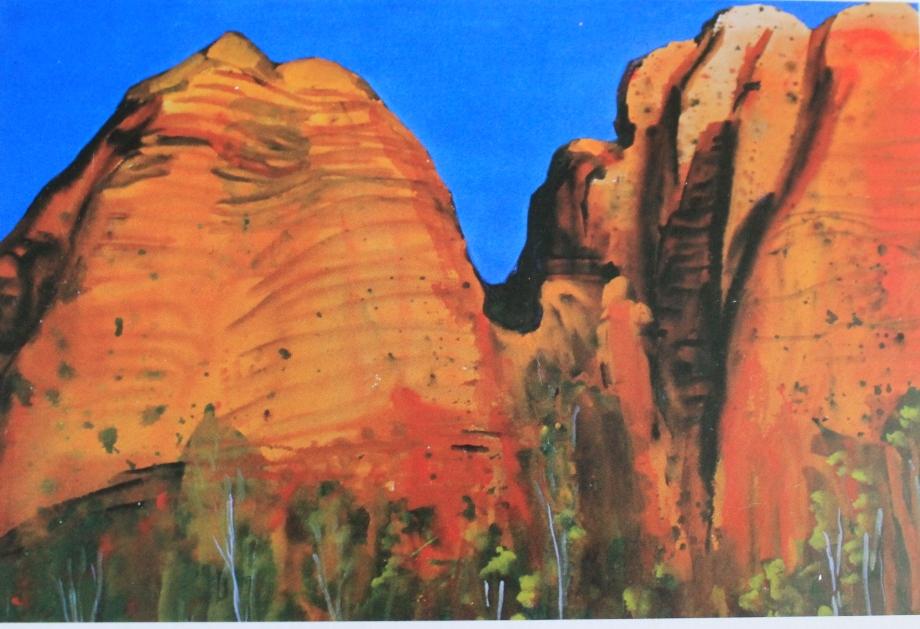
'The Bungle Bungles'
We were painting this amazing landscape, beyond your dreams in colour and shape; mountains in purple, mauve and pink, orange and salmon – all of this reflected in a waterhole. We were all very happy with this and I had an exhibition at the Holdsworth after this first trip and sold everything.
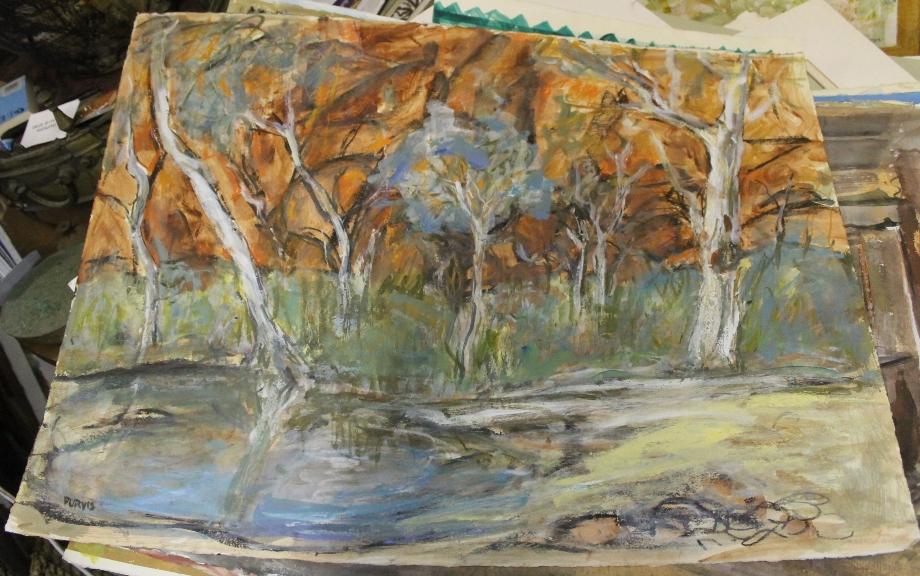
This is one from the original trip – that’s an aboriginal area; we had a really wild dingo there.
What year is this postcard from?
That one was 1985 – what stays is that nobody had ever done this before. We went to one spot where there were a few marks from the Aboriginal peoples but the ones we met were spooked by the mountains for some reason. We visited the aboriginal people in Turkey Creek, there was a settlement there and they were living in terrible conditions, terrible huts. It just so happened that Rover Thomas and some of the other top flight Indigenous artists like Paddy Tjamati were there. I bought one of Paddy Tjamati’s paintings, while sitting there in the dirt, and I consider that we were very lucky to have this experience of going there to meet them.
I asked them about going into the Bungle Bungles and they were quite adamant ‘No!’ – they would not go, but some previous group may have gone in there as, as I said, we did find some lines there that had been made.
We had no water, at all. The only water we had was drinking water and we took the bladder from a wine cask and at the last creek we crossed we all filled one of these up for paint water – two inches a day. That was the most important thing…but washing water, no – we became increasingly dirty.
To illustrate how scarce the water was; I was painting this rock that had the stripes on it because I wanted to prove that there were aboriginal people who had been there. While doing this I heard a little donkey and looked around. There was a donkey up on the hill behind me who was so thin his rib-cage was concave, he looked hollow. He could hardly walk. Where I was sitting there was a little bit of brackish water, which he wanted. I went to move and he ran, so I turned around like this (demonstrates turning inwards – eyes away from engaging with), using body language to tell him I’m not interested in him. He came down and drank right there, next to me. Almost the whole of that little puddle went into him, you could see him filling up, he was so dehydrated.
Is that the only time you went there?
No; we went again in 1987 and 1988 also along the Gibb River road. I wouldn’t go now as there are too many tourists. For many years though, this group and these people who took us were like family – if they wanted to explore somewhere we’d go with them and paint like mad. One lady who lost a kidney still went with us and after a transplant continued, she’s still working now.
We went as a group to Kakadu, the Flinders Ranges, the Mitchell Plateau – every part of Australia you possibly could, and I did hundreds of paintings.
Who was in this group – the original one?
Robbie McClellan, Clifton Pugh, Alan Lawrence – who is an Avalon man, Jenny Sages – the famous Jenny Sages; she used to go to the top of the mountain and paint all day. We went with Clifton twice and she may have been on the second one.
I’ll tell you what Clifton did which was good. We’d all paint like mad and then have a glass of wine and put all the paintings we’d done that day in a row. He didn’t say anything, just sat there, sipping, but got us all to criticise each other’s works. Then he’d criticise our criticisms. So it was good, wonderful.
Did you feel yourself developing by working in a group?
Absolutely. Somebody would try something and you’d see it and decide to try that – I think we all developed in that combined creative energy. I began experimenting more. When you’re in a hyper state of painting you might do three paintings in a day. One of those you may think is worth keeping, right. The others you might turn around and fiddle with and kill, but one you would be happy with.
What was the presence you felt in this place?
It was that the landscape is so strong – that’s what you engaged with, became immersed in.
Others came on later trips with us – Graham Alston, Maud Kemp, the Australian artist who started the magazine ‘AUSTRALIAN ARTIST, Practical Monthly for Visual Artists’, Robyn Palmer, Chick Gordon, Norma Gibson, John Hunt and Bob Evans, who also lives at Whale Beach, there were many more and all wonderful artists.
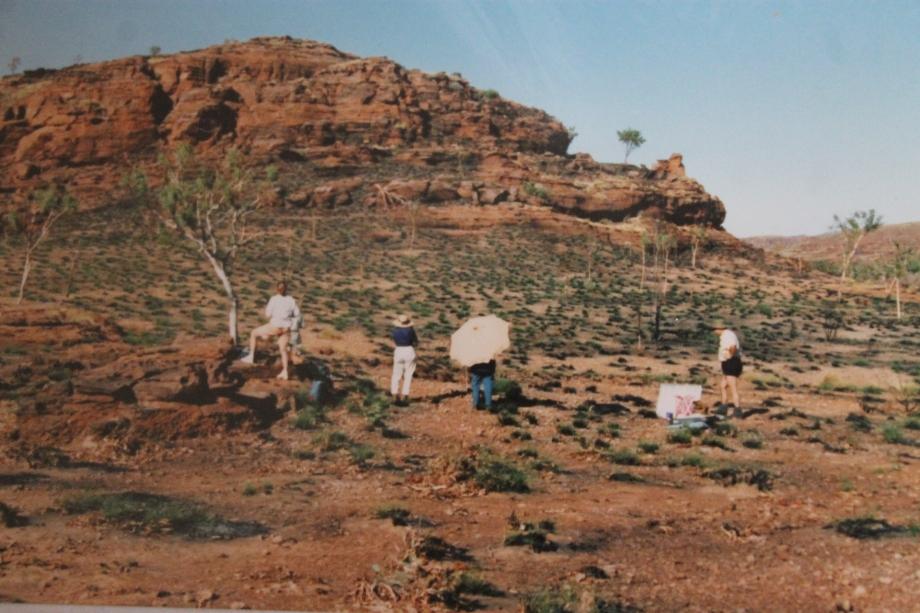
This photo is from the later group.
I had two very successful shows at the Holdsworth in 1987 and 1989 following those trips. I became a member of the Royal Art Society and am now an associate, exhibiting in their Walker Street Gallery.
I also developed my experimenting more. That one that’s on the easel at present, that’s an experimental one called ‘Listening’.
Did you have any influences for your works?
One I could name is Moya Dyring, who was my aunt’s best friend. She lived in Paris and wanted me to stay and go to the schools there. Coincidentally and wonderfully our son Andrew won the Art Studio scholarship through the Art Gallery of NSW for two months in Paris and it was her family who set all that up to honour her memory. She was an Australian artist who did a lot to encourage Australian artists.
Around 40 years ago, when I was going through a really Abstract period, my aunt Mary Alice attended an exhibition I had at the University when my brother was married. My aunt said I was ready for a one-woman show at the Macquarie Gallery and asked me when I wanted to do it, she would set it up, open it. My father was dying at this time and I just couldn’t have done it – we had a young family and Rod had just gone to the Bar and I had to look after my father, family came first. But she did offer many other opportunities and was definitely a strong supporter and early influence to work.
The other thing I liked to do was Printing. I studied Etching Art at the Workshop Arts centre at Willoughby with Bettina McMahon. I also liked fishermen, this is a fisherman in Mali, and had a Photographic Exhibition on the images taken there.
What is this one?
That’s from my Leonard French period – I became obsessed with Leonard French. That was a ruin in Central Spain, a wild place – a wonderful place. It’s an abandoned cathedral in a ruined town. This Abstract one was an idea of the aboriginal people living here prior to settlement and these are Western people taking over the land with their structures and strictures and destruction.
What a phenomenal body of work; Where does all the energy come from – at 82!?
(smiles) Just enthusiasm and the need to express myself.
Presently I love drawing people playing musical instruments – when I go to a concert I sit there drawing. I belong to the Northside Opera Study Group which began 40 years ago. On Monday 2nd of March we had the 40th Anniversary luncheon at Killara Golf Club.
Music has been and remains a constant thread?
Yes, always. I remember when the Italian Grand Opera had a season at the Tivoli and my brother and I went to every performance - we were very enthusiastic, so much so that they arranged for us to have wonderful seats in the center of the theatre. This one from the 1970’s is inspired by the music of Berlioz Te Duem, this is ‘Jubilate Deo’ and is from when I was in the height of doing these patterns.
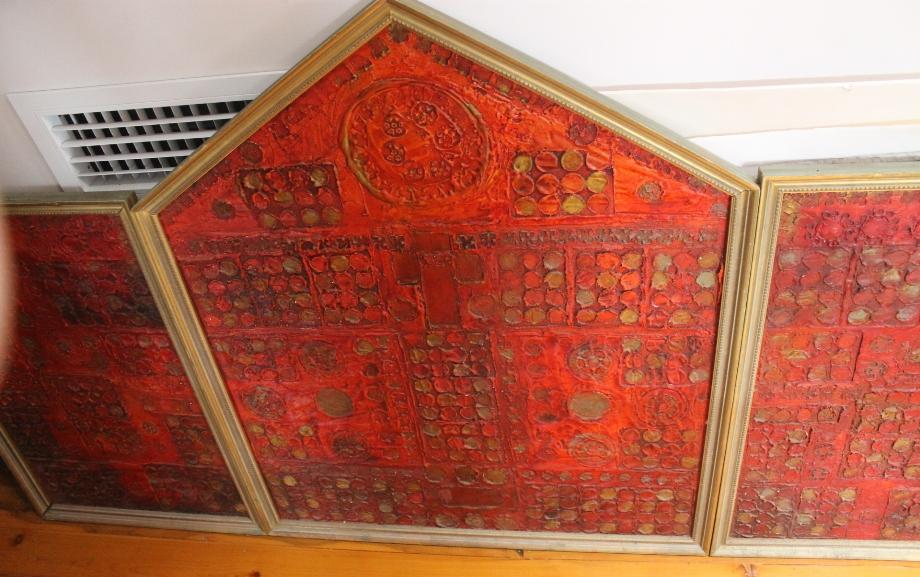
‘Jubilate Deo’
I also did a series of computer paintings, of computer panels, when these were first being introduced, which were bought by computer experts at Sydney University. Then someone asked if I would do one on DNA.
I am now painting a series of abstract paintings inspired by Mahler’s symphonies. I am also experimenting with my etching press doing mono prints and other print-making techniques. I’m always planning the next painting and thinking about painting our beautiful environment.
Who are your favourite artists?
I loved the works of Lloyd Rees. Now I love Mike Parr’s works because he’s prepared to break bounds. I like people who go one step ahead and keep developing themselves. If somebody just keeps repeating the same pattern it’s not good.
I like Fred Williams; every time you look at his Australian Landscapes you think ‘why did Fred Williams see that before me?’. I think everybody is amazed by Fred Williams work.
I did love Drysdale when he was working, and Oban and those artists who were serious artists, not just decorative. Sali Herman, I loved his work. He was a wonderful character and a great energy.
Rod: he was a fairly European man when settling into Australia in the mid 1930’s, who did the most magnificent paintings of his garden. The trees, plants and old houses were wonderful. It was interesting that you had a European painting places like Surry Hills and Woolloomooloo which clicked, it worked.
M: When you talk about Australian artists I would say Elisabeth Cummings, Donald Friend, Margaret Woodward and Jeffrey Smart. I couldn’t go past Jenny Sages either among Australian artists I admire of today; you can’t go past her determination. Her portraits are wonderful and I love the way she paints landscapes. She uses Encaustic.
Ben Quilty as well; the way he reacted in his paintings of the war spoke to me.
I feel anyone who speaks strongly with their own language, not imitating anyone else, but expressing themselves is going to produce work people can love as well as fathom.
If you could name one from any era, any time?
I would go for Michelangelo or someone like that as he draws, anybody who has the ability to do that, like Leonardo De Vinci, you could not go past.
What’s the best thing about committing decades to pursuing Arts and developing that in yourself?
As far as I’m concerned I didn’t have any choice. It’s a total compulsion. Even while I’m sitting here I’m sketching you in my head, I’m drawing all those shapes on the table here between us.
Dianna: Even if Marian puts a lunch on the table will be decorative in a very artistic way. She’s simply an absolute artist.
M: it upsets me if things jar; if they’re the wrong colours or not pleasing to the spirit.
What did you do once your children left home?
We travelled. Rod was the President of the International Law Association which meant that we went to all sorts of interesting places and had wonderful experiences and met all sorts of wonderful people and their cultures. This also meant I had the opportunity to go to all the major galleries wherever I was.
Every year we would go somewhere. Rod and I took the Trans-Siberian across Russia without a Russian with us and before Perestroika. We’ve been to Tibet travelling Kathmandu, driving up over those high mountains. We’ve been to India, to Mali in West Africa – everywhere we go I’m studying, drawing, photographing.
What do you feel when you’re in an Art Gallery?
Apparently I take too long, stop in front of every piece. I feel excited and think I move from one to another quickly. If something catches my eye I move across to that and study that one. I would like to say is that people don’t really look. An instance of this is that there was a Mondrian Abstract painting of a tree, and I timed how long the average person looked at it and they were all too quick. I stood there and said, ‘you’ve got to look at that painting for at least three minutes before it works’. People need to see that the lines go like that and when you look at it for a certain length of time they can then see that the lines are in fact an abstractive tree. One man scoffed ‘how stupid’ initially and then did it and said ‘you’re right!’ and then ‘I’ve never really looked at paintings’.
The average person will go too fast through these places. You have to rest and look at them, allow yourself, even with landscapes, to become part of them.
What is your favourite place/s in Pittwater and why?
I love the mangroves at Careel Bay. My favourite place is Bangalley Head because it’s so wild and dangerous – the whole place is beautiful. It’s like the edge of the world there.
And Whale Beach of course – it’s our Ashram. We went into town the other day, to the King Street Wharf and I looked at all those huge buildings being built and just thought – I don’t like it. We come down here, you can go down to Avalon dressed in whatever you like, all the people are friendly, open – it’s a community, people care about each other.
What is your motto for life or a favourite phrase you try to live by?
Treasure each day – do something creative every day. And live each day as if it could be the last.
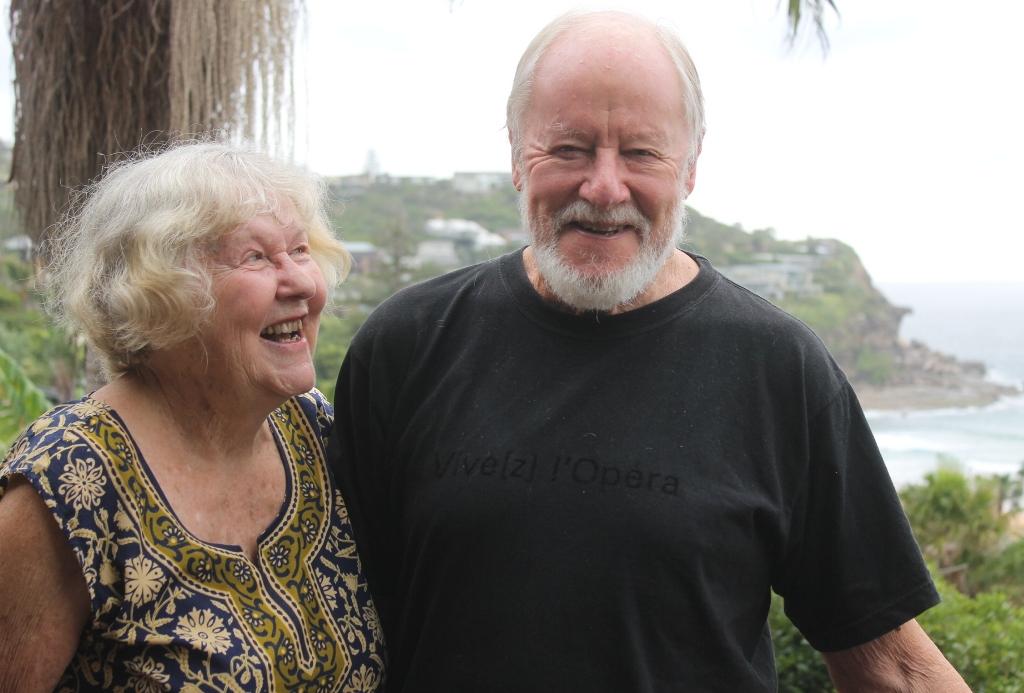
Marian and Rod
Studied with Professor Bissietta
Attended Hornsby Technical College – 3 years: Painting, Photography
Learnt Printmaking at The Willoughby Workshop
Attended Life Drawing and Sculpture classes at Willoughby Workshop
Travelled extensively, always visiting Galleries in each place visited
Several Painting trips in remote areas of Australia
Passion for Australian Landscape Painting, Etching, Life Drawing, Religious Subjects, Ceramics and Abstract Symbolic Work.
Exhibitions:
Group Selective: 1969 – 1979
Blake Prize: 1965 – 1980???
Kissing Point Gallery
Hunters Hill Gallery
1986: Holdsworth
1988: Holdsworth
1989: Holdsworth
Wynne
Sulman
1988: Wynne
1st in Lane Cove
1st in Kuring-Gai – contemporary
Hawkesbury Purchase
2nd in Easter Show – 1st in Drawing
1988 or ’89 – Printmaking
Merriwa
Castle Hill
Berrima
Tamworth
Ryde
Many prizes in municipal competitions
Paintings in Overseas (Galleries or Private Collections?): USA, UK, Italy, France
Elizabeth Trust/Theatre
Commonwealth Bank Collection
Queensland Branch of Australian Workers Union – this is big; and of workers coming out of a mine
Extras and Research:
OPERA AT TIVOLI - Opening In November. Sydney performances by J.C. Williamson's imported Italian Grand Opera Company will be at the Tivoli Theatre. The Sydney season will begin during the first half of November. The first opera will probably be "Aida," followed by "Madame Butterfly," "La Tosca," "The Barber of Seville," and "Faust."
The company's leading drama-tic tenor, Raffaele Lagares, who is said to bear a remarkable physical resemblance to Caruso, will arrive from America by plane today, and fly on to Melbourne to-morrow. The rest of the singers will arrive in Perth by sea to-day.
The Sydney season, with Wednesday and Saturday matinees, is expected to last about three months. The company will present about 20 operas. The principals will sing in Italian, and the choruses in English. The Melbourne season will begin with "Ada" on Saturday week, August 14. The conductor, Franco Ghione, who arrived in Australia several weeks ago, began rehearsals of the orchestra of 50 in Melbourne yesterday. A director of J. C. Williamson Theatres Ltd., Mr. John Tait, said last night in Sydney that, although the season would be devoted mainly to operas by Italian composers, Mozart's "Don Giovanni" would certainly be presented. OPERA AT TIVOLI. (1948, August 3). The Sydney Morning Herald (NSW : 1842 - 1954), p. 5. Retrieved from http://nla.gov.au/nla.news-article18080089
G.F. Bissietta – Artist: Bissieta was an artist providing a mural for the Repin's espresso bar, MOKA, with interiors designed by George Watkins. He is also associated with an art gallery formerly located at 70 Pitt Street, Sydney.
FOOD is always a lure for a party: cocktails and risotto are to be served along with a talk on surrealism at an artistic evening to be held at the Bissietta Art School on September 2. Small Talk... (1952, August 10). The Sunday Herald (Sydney, NSW : 1949 - 1953), p. 18. Retrieved from http://nla.gov.au/nla.news-article18515485
Exhibition By Art Students - BY OUR ART CRITIC
The student exhibition at Prof. Bissietta's A.D.R. Art School, 70 Pitt Street, is bright as a mixed bunch of flowers, even when the colours are not chosen with impeccable taste. Certainly, the depressed atmosphere of similar exhibitions a decade or so ago has blissfully vanished. No one here seeks that shadowy refuge where the problems of painting are discreetly veiled. Without evasion, these artists of to-morrow fearlessly commit themselves. And if their work appears rather awkward, the knowledge gained amply compensates for some unintentional humour which may invade the most earnest work. The exhibition docs not boast of a "star" pupil, but design is well considered and draughtsmanship at least is hinted at. Among the more talented paintings, "Elda," by Reginald Gordon, has a tenderness and flair not met with elsewhere, although "Old Leaves," by Alan Henderson, mellows in its rusty harmony. In "Provincial Girl," Ernest Smith tries a little too hard to define, killing emotion in the process, while Georgina Melville in her vigorous self-portrait is not given to flattery. "Harmony in Green," by Peter Lake, a large landscape boldly constructed, is unrelieved in its acidity. But Hugh Robinson, in "Terrace Houses." calls upon Utrillo to- provide a touch of poetry, which, indeed, he does. The exhibition will be opened by the Rev. Dr. F. R. Arnottat 2.45 p.m. to-day. Exhibition By Art Students. (1953, October 10). The Sydney Morning Herald (NSW : 1842 - 1954), p. 2. Retrieved from http://nla.gov.au/nla.news-article18392513
PROFESSOR Stephen Roberts, Vice Chancellor of the University opened the Bissietta Art Gallery on Tuesday evening before a large assembly, with tremendous grace. What a good speaker he is! Mr. Bissietta has to be heartily congratulated. With his own baby hands, he has created a repository for art of beauty and practicability. As for the opening exhibition . . . it is a fine mélange predominantly Australian with a nice tobasco sprinkling of European painters' canvasses. We hail them! An invasion — two line drawings by Matisse and one print by Campigli, 'Donna al Telaio' all three of which I'd have liked to pinch. But my first love is Donald Friend's 'Two Angels' to which I'll add that wee Gleeson.' Into all this, muscles Kmit, with that wicked old dame 'Bohemian Girl' whom he uses over and over in varying guises. Finally in a gallery of Big Brass, we find Judy Cassab at her best. Miss Cassab has really emerged with her 'Still Life' . . .a highlight in her amazing growth. A printer's error has put N.F.S., beside this picture in the catalogue. This is not true. 'Tis!. Andreas' Page. (1954, July 11). Truth (Sydney, NSW : 1894 - 1954), p. 38. Retrieved from http://nla.gov.au/nla.news-article168415205
Studios in Paris Scholarship - Next round of applications opens March 2015.
The Art Gallery of NSW awards artists or scholars in the visual arts a two-month or three-month tenancy in either the Moya Dyring Studio or the Dr Denise Hickey Memorial Studio at the Cité Internationale des Arts, Paris. The Cité is a non-profit international art centre which provides studio accommodation for artists and scholars from around the world.
Moya Dyring Memorial Studio – two-month tenancy:Moya Dyring was an Australian artist and great supporter of young Australian painters and students visiting Paris. She lived at Quai d’Anjou on the Ile St Louis, almost opposite the Cité Internationale des Arts. After her death in 1967, her friends and family purchased a studio in her memory at the Cité for the continued support of visiting artists. See: www.artgallery.nsw.gov.au/about-us/opportunities-for-artists/studios-in-paris-scholarship
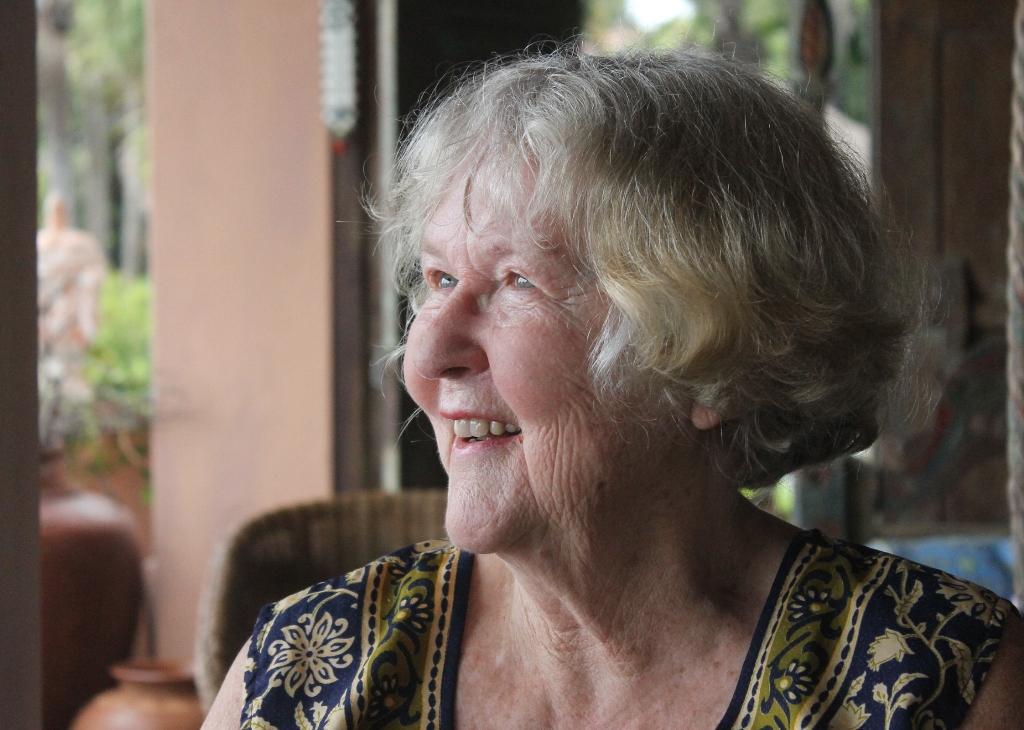
Copyright Marian Purvis, 2015.